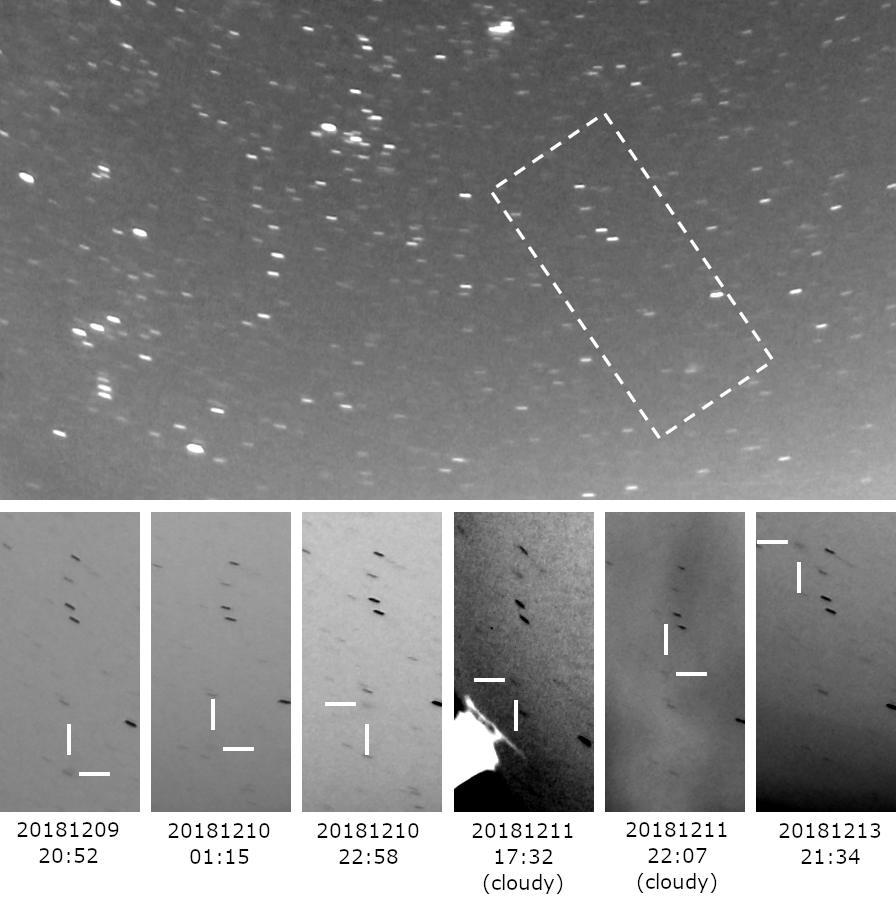Orwell Astronomical Society (Ipswich)
Comet 46P/Wirtanen, 06 February 2008 - 24 December 2018
Comet 46P/Wirtanen is a short period (5.4 years) comet which was discovered photographically by Carl Wirtanen in 1948 at the Lick Observatory, California.
In early December 2018, the comet passed northwards from Eridanus into Taurus, heading towards Auriga, and became visible to observers in the northern hemisphere. It brightened in the winter sky, reaching perihelion on 12 December and coming closest to the Earth on 16 December, at a distance of approximately 11m km. On this date it was some 160m km from the Sun and was also at its brightest. On 24 December, it passed close to the bright star Capella.
Finder chart for the comet (by Sky & Telescope magazine).
Unfortunately, cloudy nights around the date of closest approach severely restricted observing opportunities.
Alan Smith's all-sky camera was sensitive enough to capture the comet. (This was an unexpected bonus as the camera was not designed to capture faint objects!) The following montage shows the motion of the comet against the background stars during the period 06-13 December 2018. All images have an exposure of 150 s at F2.8, ISO 800 with a 4.5 mm lens.
Notes:

In early February 2008, comet 46P/Wirtanen was in Pisces about 6° below galaxy M74 and slowly moving away from the Sun. It passed a few degrees above the Pleiades in early March as it started to fade.
On 06 February the comet was situated 0.93 AU from the Earth, making it the closest of four comets imaged by Mike Harlow during a period of one week (the other three were 17P/Holmes, 29P/Schwassmann-Wachmann and C/2008 C1 (Chen-Gao)).
Mike imaged the comet on 06 February 2008, 19:08 - 19:28 UT. (Details are: 32x30 second exposures; FOV 70x50 arcmin; north up; 16 cm F/2.5 Schmidt camera with MX916 CCD.) The image also shows asteroid (13) Egeria which he did not at first identify! Its shorter trail shows that it was moving relative to the stars but much more slowly than the comet (as it was at a much greater distance of 2.7 AU from Earth).